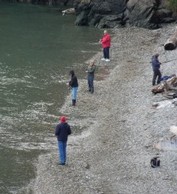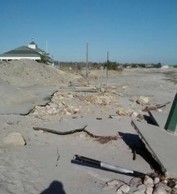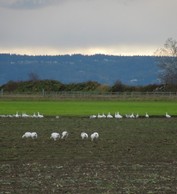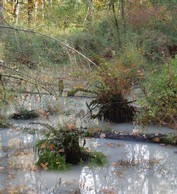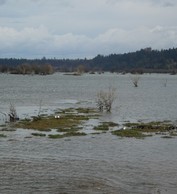STILLPOINT Archive: last updated 04/24/2013
By Janel Curry
My father taught all of his children and grandchildren to fish. These fishing lessons mostly occurred at dusk, between day and night, in the small boat he kept in a strip-mine lake near his home. And we all learned that the best place to cast our lines was along the edges of the lake where brush and trees had fallen into the water. It was my father who first taught me to pay attention to the edges.
Many Edges
So as a scholar I have been drawn to the regions at the intellectual edges of disciplines. But my curiosity extends to many types of edges, like the urban edge along which a city melts into the rural landscape. When my daughters and I moved from a small town in Iowa to a moderate-sized city in Michigan, my daughters struggled with the concepts of rural and urban. The first few weeks, as we drove from our house to various places they would constantly ask: Are we in the city now? And now are we in the city?
Cognitive psychologists will tell you that we have an inherent need to categorize, just as my daughters were trying to do. But emphasizing distinctions and building concrete boundaries between entities keep us from discovering the richness that we find at the edges. Recent scholarly discussions have moved toward describing reality as hybrid—part social, part natural—in order to grapple with the meaning of these edges.
Key to understanding this hybridity is the role of boundary organizations, organizations that operate “between” the human and natural components of a natural resource. These organizations, such as irrigation districts or regional planning agencies, usually mediate multidirectional information flows among various governmental units that operate at different scales.
Understanding “Fuzziness”
The richness of edge regions is dependent on allowing the boundary between “types” to be fuzzy, allowing the mixing of everything from ideas to nutrients, creating very rich ecosystems for plants, animals, and intellectual thought. Last fall, for instance, I visited the Nisqually National Wildlife Refuge on Puget Sound. At one time the estuary was diked and drained for farmland, which destroyed the edge region that allowed for the mixing of fresh and salt water. Today the dikes have been breached, allowing the fuzzy boundary to return, along with its birds and wildlife. And where you find fuzzy boundaries you find avid birders!
Leaving Space at the Edges
We have something to learn from nature, especially as we observe what it means to restore fuzzy edges that leave space for nature to thrive. These fuzzy edges allow for the mixing of nutrients and the movement of creatures like snow geese to come and go across seasons and ecosystems.
As we try to create boundaries that are inflexible we leave no room for risk, for change, and, ironically, for safety. Hurricane Sandy surely reminded us of this lesson most recently.
Can we learn to leave space at the edges so that we might become wise? Can we leave the edges for fishing?
Janel Curry is the Provost of Gordon College, and a two-time Fulbright Scholar with an academic background in geography and political science. She blogs frequently at Reflections on Place and Cross-Cultural Encounters.
Photos, from top:
1. Fishing
2. Narragansett Bay damage from Hurricane Sandy
3. Snow Geese in Puget Sound, having arrived from the Arctic with the change in season
4. Mountain sediment and water coming down into the estuary
5. Land/water edges
